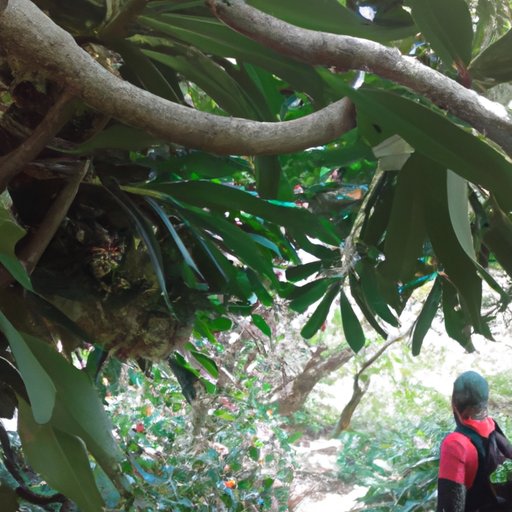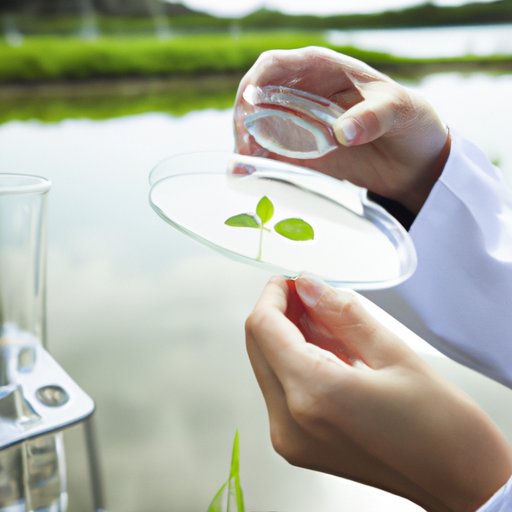Introduction
At the second grade level, students begin to explore the wonders of science through hands-on activities and experiments. Science education for second graders typically covers topics such as the natural world, life sciences, physical sciences, earth and space science, and scientific inquiry skills. In this article, we’ll take a closer look at what second graders learn in science and how it prepares them for future success.

Exploring the Wonders of the Natural World
One of the main focuses of second grade science is exploring the wonders of the natural world. Through observation and experimentation, students gain an understanding of the environment around them. They learn to observe and describe the natural world, study plants and animals, and understand weather patterns.
Observing and Describing the Natural World
In second grade science, students are introduced to the concept of observing and describing the natural world. They learn to identify common objects in their environment and use descriptive words to explain what they see. According to a study by the National Research Council, “Young children can make observations and draw conclusions even before they have developed the language to express their ideas.”
Understanding Weather Patterns
Second graders also learn about weather patterns and how they affect our daily lives. Students learn about different types of weather, such as rain, snow, and wind, and how these affect the environment. They also explore the effects of climate change and how it impacts the planet.
Studying Plants and Animals
In addition to learning about the environment, second graders also study plants and animals. They learn about the characteristics and behaviors of different species, and how they interact with one another and their environment. Through observation and experimentation, students gain an understanding of the roles that plants and animals play in the environment.

Investigating Life Sciences and Ecology
Second grade science also involves investigating life sciences and ecology. Students learn about the diversity of living things and how they interact with one another and their environment. They also explore ecosystems and investigate how living things depend on each other for survival.
Exploring the Diversity of Living Things
In second grade science, students learn about the diversity of living things, including plants, animals, and microorganisms. They explore the characteristics of each type of organism and how they interact with their environment. Through observation and experimentation, students gain an understanding of the role that living things play in the environment.
Investigating Interactions Among Living Things
Second graders also learn about the interactions among living things. They explore how different organisms rely on each other for food, shelter, and other resources. They also investigate how living things interact with their environment, such as how animals impact the food chain or how plants provide oxygen for other organisms.
Understanding Ecosystems
Students also learn about ecosystems and how they depend on each other for survival. They explore the components of ecosystems and how they interact with each other. Through observation and experimentation, students gain an understanding of the importance of biodiversity and how it helps maintain a healthy environment.

Exploring Physical Sciences and Engineering Concepts
Second grade science also involves exploring physical sciences and engineering concepts. Students learn about forces and motion, properties of matter, and how to apply engineering principles. Through observation and experimentation, students gain an understanding of how the physical world works.
Investigating Forces and Motion
In second grade science, students learn about forces and motion. They explore the effects of different forces, such as gravity and friction, and how they affect movement. Through observation and experimentation, students gain an understanding of the role that forces and motion play in the physical world.
Exploring Properties of Matter
Second graders also learn about the properties of matter, such as mass, volume, and density. They explore how these properties affect objects and how they interact with each other. Through observation and experimentation, students gain an understanding of how matter behaves in different situations.
Applying Engineering Principles
In addition, students learn how to apply engineering principles to solve problems. They explore how to design and build structures, such as bridges and buildings, and how to use technology to create solutions. Through observation and experimentation, students gain an understanding of how engineering principles can be used to solve real-world problems.
Understanding Earth and Space Science
Second grade science also involves understanding earth and space science. Students learn about the solar system, maps and geography, and natural resources. Through observation and experimentation, students gain an understanding of the role that the earth and space sciences play in our everyday lives.
Investigating the Solar System
In second grade science, students learn about the solar system and its components. They explore the planets, moons, asteroids, and comets that make up our solar system and how they interact with each other. Through observation and experimentation, students gain an understanding of the role that the solar system plays in our universe.
Exploring Maps and Geography
Second graders also learn about maps and geography. They explore different types of maps, such as physical, political, and topographic maps, and how they can be used to understand the world around us. Through observation and experimentation, students gain an understanding of the role that maps and geography play in our lives.
Understanding Natural Resources
In addition, students learn about natural resources and how they are used. They explore the importance of renewable and nonrenewable resources and how they are used to meet human needs. Through observation and experimentation, students gain an understanding of the role that natural resources play in our society.
Developing Scientific Inquiry Skills
Finally, second grade science involves developing scientific inquiry skills. Students learn how to identify questions and hypotheses, gather information through investigation, analyze data, and draw conclusions. Through observation and experimentation, students gain an understanding of the scientific method and how it can be used to answer questions and solve problems.
Identifying Questions and Hypotheses
In second grade science, students learn how to identify questions and formulate hypotheses. They explore the process of asking questions, gathering evidence, and formulating hypotheses based on the evidence. Through observation and experimentation, students gain an understanding of the scientific method and how it can be used to answer questions.
Gathering Information Through Investigation
Second graders also learn how to gather information through investigation. They explore different methods of collecting data, such as observation, interviews, and surveys. Through observation and experimentation, students gain an understanding of the different ways that data can be collected and analyzed.
Analyzing Data and Drawing Conclusions
In addition, students learn how to analyze data and draw conclusions. They explore how to analyze data using charts and graphs, and how to interpret the results. Through observation and experimentation, students gain an understanding of the role that data analysis and interpretation play in the scientific process.
Conclusion
In conclusion, second grade science involves exploring a variety of topics, from the natural world to physical sciences and engineering concepts. Students learn to observe and describe their environment, study plants and animals, investigate life sciences and ecology, explore physical sciences and engineering concepts, understand earth and space science, and develop scientific inquiry skills. By participating in hands-on activities and experiments, second graders gain an understanding of the role that science plays in our everyday lives.
(Note: Is this article not meeting your expectations? Do you have knowledge or insights to share? Unlock new opportunities and expand your reach by joining our authors team. Click Registration to join us and share your expertise with our readers.)
